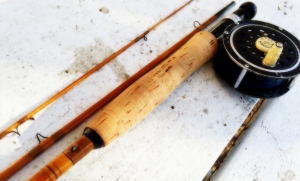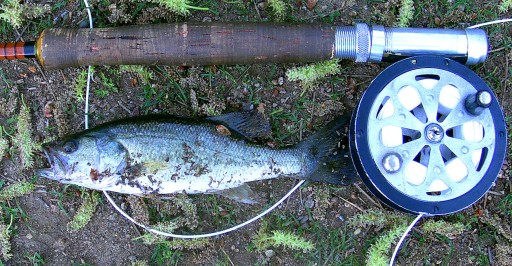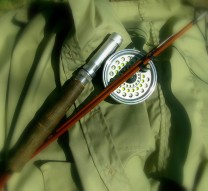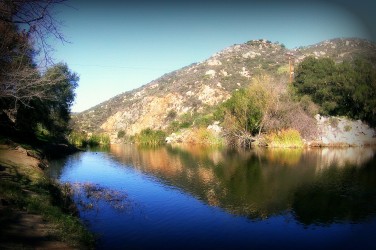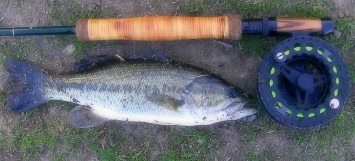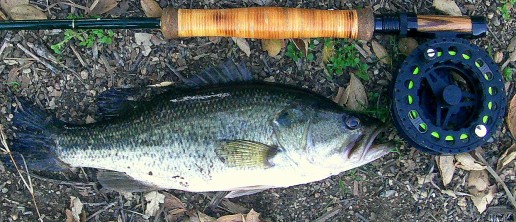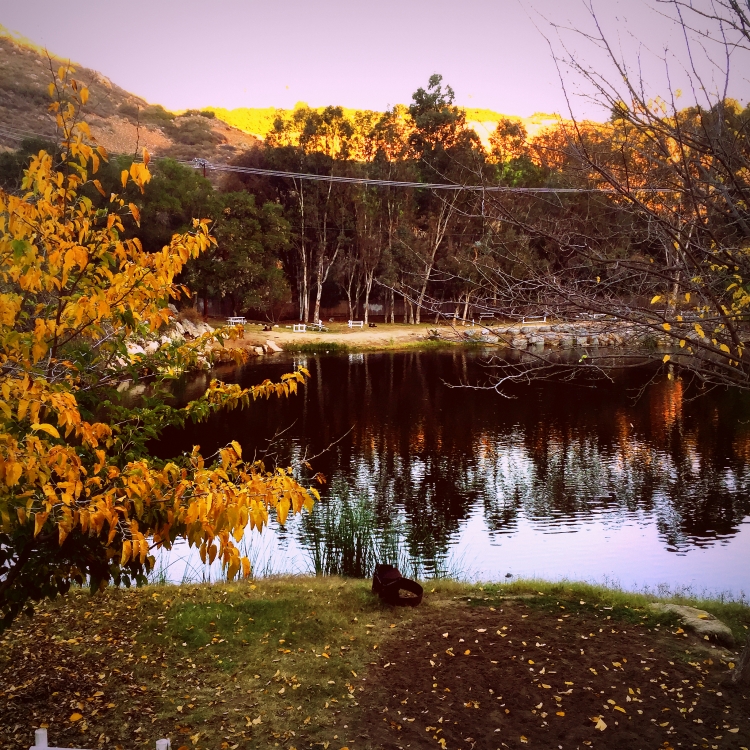
The pond’s west shore deepens with amber shadows as the day dies.
I made a short jaunt to Polio Pond early this afternoon. I wanted to fish a 5-weight 9′ Versitex IM6 graphite rod that has a silky, glasslike feel, along with a 6-weight Edwards 35 quad of the same length. I thought comparing the two would be interesting, and catching fish wouldn’t be bad, either.
I worked the west side, which is my favorite, but was unable to fish the pool because the bullrushes have grown too high. Thankfully, I made friends with a groundskeeper who also spoke Spanish. We chatted for awhile and he promised he would speak to his boss about cutting down the tules.
There were few signs of fish, the most telling being that I didn’t catch any. In fact, I haven’t had a bite the past five or six times I’ve been there. Either I’m a very bad bass fisherman (very likely) or the fish have hunkered down for the winter.
Or most of them died off during the heavy algae bloom this summer.
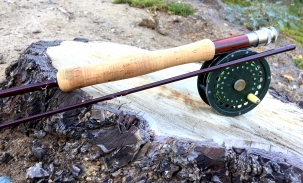
The Versitex 9-footer pairs well with a Shakespeare Russell 1895.
Rods can be great lawn casters and yet do poorly in water. The Versitex—-an old IM6 blank long superseded by more high-tech graphite—did not disappoint on both counts, though I suspect it would do better with a 6-weight sinking line instead of a 5.
After casting it for an hour and then switching to the Edwards, I was taken aback by the difference. The quad felt like a lead pipe compared to the Versitex. And yet it casts more accurately and powerfully, and needed less false casts to get it going. It did make me pause, but I certainly won’t be switching to graphite anytime soon, although IM6 seems like a great compromise between high-tech rods and glass. I am a devoted fan of the latter, but my devotion is to bamboo.
Glass taught me to slow down; bamboo, to yield.

